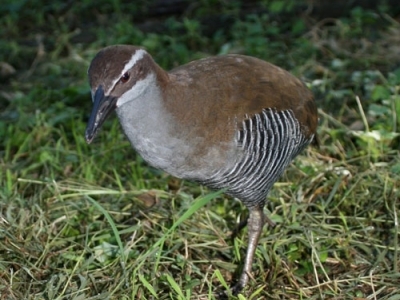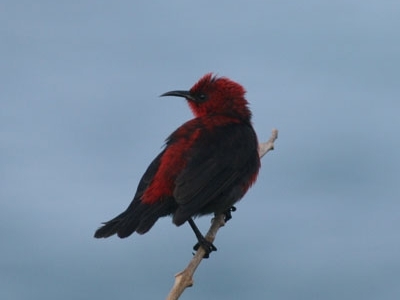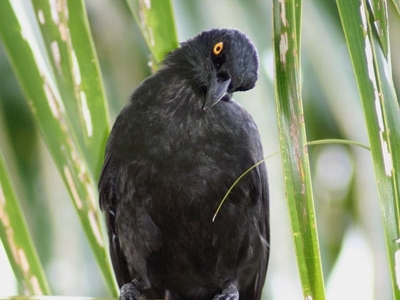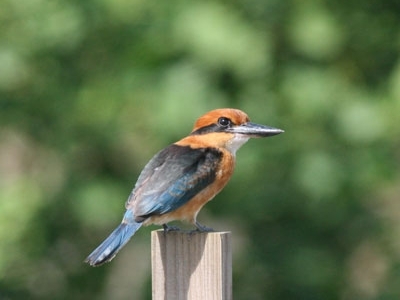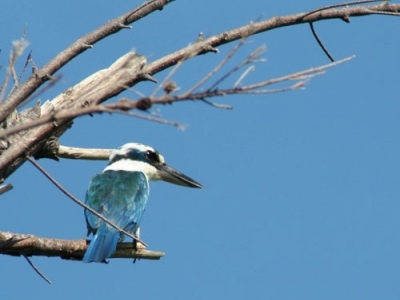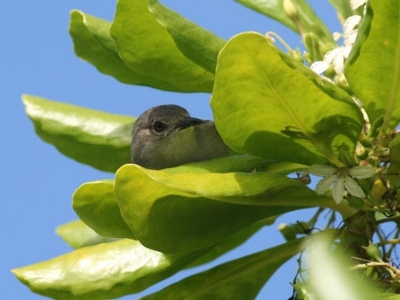Operational Activities: Brown Treesnake
The brown treesnake ( Boiga irregularis) was accidentally introduced to Guam in the late 1940s or early 1950s, probably from the Solomon Islands. Native to northeastern Australia, eastern Indonesia, Papua New Guinea, and the Solomon Islands, the brown treesnake has significantly damaged the economy and ecology of Guam.
The brown treesnake is the subject of a cooperative program among WS and a number of program partners to control snake populations on Guam and prevent its spread throughout the Pacific Rim.
The brown treesnake has caused extensive economic and ecological damage to Guam. The snake is responsible for numerous power outages across the island each year and is an opportunistic feeder that has caused the extirpation or extinction of most of Guam's native forest birds and lizards.
Brown treesnakes are about 15 inches in length at hatching and may reach 10 feet in length as adults; however, most snakes on Guam are 3 to 4 feet long. This snake is a rear-fanged semi-constrictor and is mildly venomous. Although the brown treesnake will readily strike when aggravated, it does not present a danger to adults. However, infants less than 6 months may be at risk from both brown treesnake bites and constriction.
The brown treesnake is an adept climber and inhabits trees, shrubs, and forests. They spend days coiled in a cool and dark location, such as a treetop or in a rotted log. At night, they become active and search for prey.
The brown treesnake is abundant on Guam with localized estimates reaching 20 or more snakes per acre of jungle. These population density estimates are among the highest snake densities ever recorded.
The brown treesnake has caused extensive economic and ecological damage to Guam. It is responsible for numerous power outages across the island each year.
The brown treesnake may be attracted to residential areas by an abundance of rodents, lizards, poultry, or debris that serves as habitat for snake prey. The snake may occasionally enter buildings while searching for food. Simple precautions such as keeping doors closed and screens secured, screening air ducts and pipes that open outdoors, keeping garbage and pet food in secured containers, and removing surrounding vegetation may make a building less attractive to brown treesnakes.
The brown treesnake is an opportunistic feeder and has caused the extirpation or extinction of most of Guam's native forest birds and lizards. The snake has eliminated 10 of the 13 native birds, many lizards species, and several bat species. As native bird populations decline, the snake population has shifted to feeding on abundant introduced lizards. Rodents, introduced birds, and bird eggs make up the rest of the snake's diet on Guam. In its native range, the snake population is kept in check through natural processes such as disease, competition for food, and predation. Although similar processes likely occur on Guam, they are not enough to control the brown treesnake population.


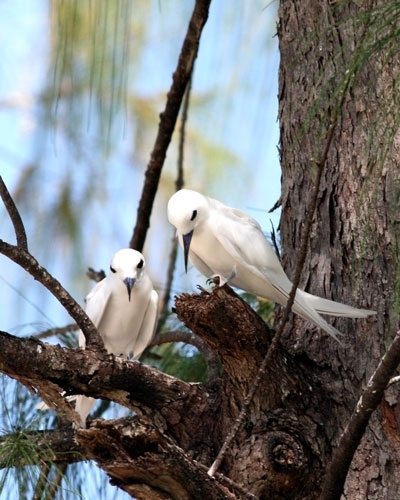





The Guam rail is one of several species historically present on Guam.
The cardinal honeyeater is one of several species historically present on Guam.
The white tern is one of several species historically present on Guam.
The Micronesian starling is one of several species historically present on Guam.
The Micronesian kingfisher is one of several species historically present on Guam.
The collared kingfisher is one of several species historically present on surrounding islands.
The Caroline island reed warbler is one of several species historically present on surrounding islands.
The grey white eye is one of several species historically present on surrounding islands.
APHIS Wildlife Services coordinates operational efforts on Guam aimed at keeping the snake from reaching other destinations. Wildlife Services personnel use snake trapping in high-risk areas, trained snake-detector dogs in cargo, nighttime spotlight searches, toxicants, and public education as tools to achieve this goal.
To contact your WS State Office, call 1-866-4USDAWS (1-866-487-3297).
Learn more about Wildlife Services' National Wildlife Research Center research and investigation activities on a wide variety of wildlife damage issues including those related to brown treesnakes.


